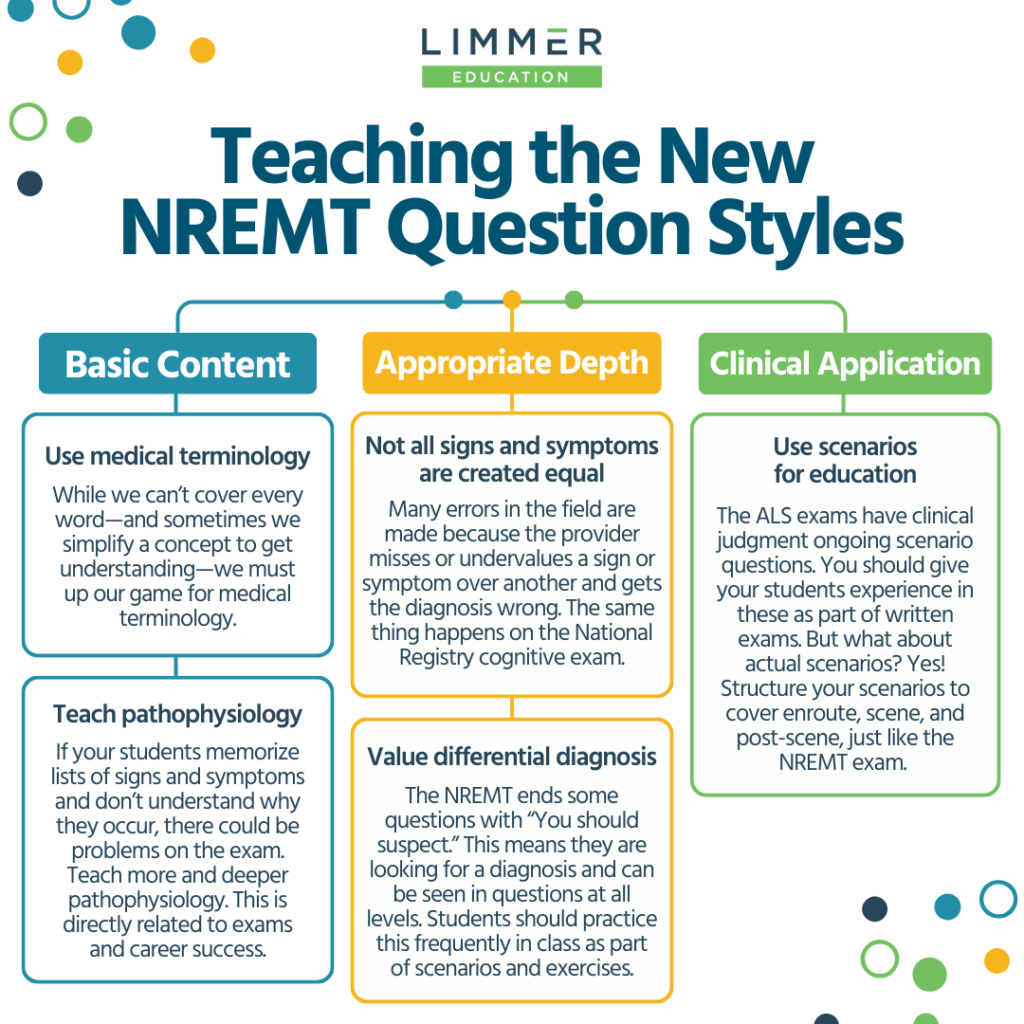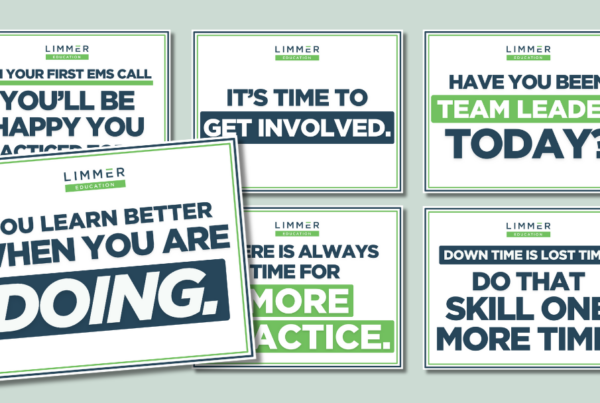By Dan Limmer
The new NREMT question styles have caused quite a bit of anxiety recently. This anxiety has existed in students and educators since the new exam went live on July 1 for AEMT and paramedic candidates.
The advice in this article is also valid for EMT candidates. While the new EMT exam rollout, scheduled for 2025, has just begun, the new question styles (except clinical judgment scenarios) are now included in the EMT cognitive exam.
Why is this article on teaching the new questions and not taking the new questions? Bill Seifarth, Executive Director of the NREMT, left this comment on a prior blog post by Limmer Education about the latest questions and the difficulty level of the exam. He wrote:
“If education programs prepare their students to function in the field as EMS clinicians, their students will do fine with this exam. When the NCLEX (nursing exam) implemented similar types of questions, their pass rates did NOT see any significant changes. Based on our pilot testing of similar items, we anticipate there to be a similar response to our change (NREMT’s new exam), as with the NCLEX change. The take-away message to EMS educators: prepare your students to function in the field and they will do fine with our new (and IMPROVED) examination process.”
If the questions are valid from a psychometric perspective and within the scope of knowledge at the level tested, the best thing an educator can do is ensure they are teaching the appropriate material. Let’s break this down into three categories: basic content, appropriate depth, and clinical application.

Basic Content
Use Medical Terminology
While this seems simple, one of the most common statements students make after taking the NREMT is, “There were words on there I had NO IDEA what they were.” While we as educators can’t cover every word—and sometimes we simplify a concept to get understanding—we must up our game for medical terminology.
Teach Pathophysiology
Pathophysiology is the key difference between memorization and understanding everything from patient presentation to shock. Many educators were taught during the EMT-B curriculum (1994 – 2009) and never got the pathophysiology in their initial EMT class. Unfortunately, this provides no reference point for today’s EMS class. If your students memorize lists of signs and symptoms and don’t understand why they occur, there could be problems on the exam. Teach more and deeper pathophysiology. This is directly related to exams and career success.
Appropriate Depth
Not All Signs and Symptoms Are Created Equal
“Value” as a verb is at the evaluate level in Bloom’s Taxonomy of the cognitive domain. Many errors in the field are made because the provider misses or undervalues a sign or symptom over another and gets the diagnosis wrong. The same thing happens on the National Registry cognitive exam. Students read the question. When they read and interpret, do they consider signs and symptoms equally or weigh them by relevance to the patient’s presentation and suspected condition? Again, this is essential for exam and career success.
Value Differential Diagnosis
At all levels, the NREMT ends some questions with “You should suspect.” This means they are looking for a diagnosis. Students should practice this frequently in class as part of scenarios and exercises. Your classroom exams should model the NREMT cognitive exam by asking, “You should suspect.” Differential diagnosis is built on a foundation of pathophysiology; it fuels assessment by suggesting history questions and physical examinations based on body systems and wraps into the application of all skills performed.
Clinical Application
Use Scenarios for Education
The ALS exams have clinical judgment ongoing scenario questions. You should give your students experience in these as part of written exams. But what about actual scenarios? Yes! Structure your scenarios to cover en route, scene, and post-scene, just like the NREMT exam. Quiz students on their thoughts as they “respond.” Give them cues before they enter the scenario to help them decide on roles and responsibilities, choreography, safety, response challenges, and approach. On scene portions of the scenario should focus on structure and priorities as part of patient care. Follow all the way through in the scenario to transport. Throw a curve occasionally, make sure transport decisions are appropriate, and focus on reassessment.
Final Thoughts
The exam items people are worked up about are used on other health profession exams; they are validated, and they are reasonable. The way to handle these, for you and your students, is to follow the words of Bill Seifarth:
“The take-away message to EMS educators: prepare your students to function in the field and they will do fine with our new (and IMPROVED) examination process.”


